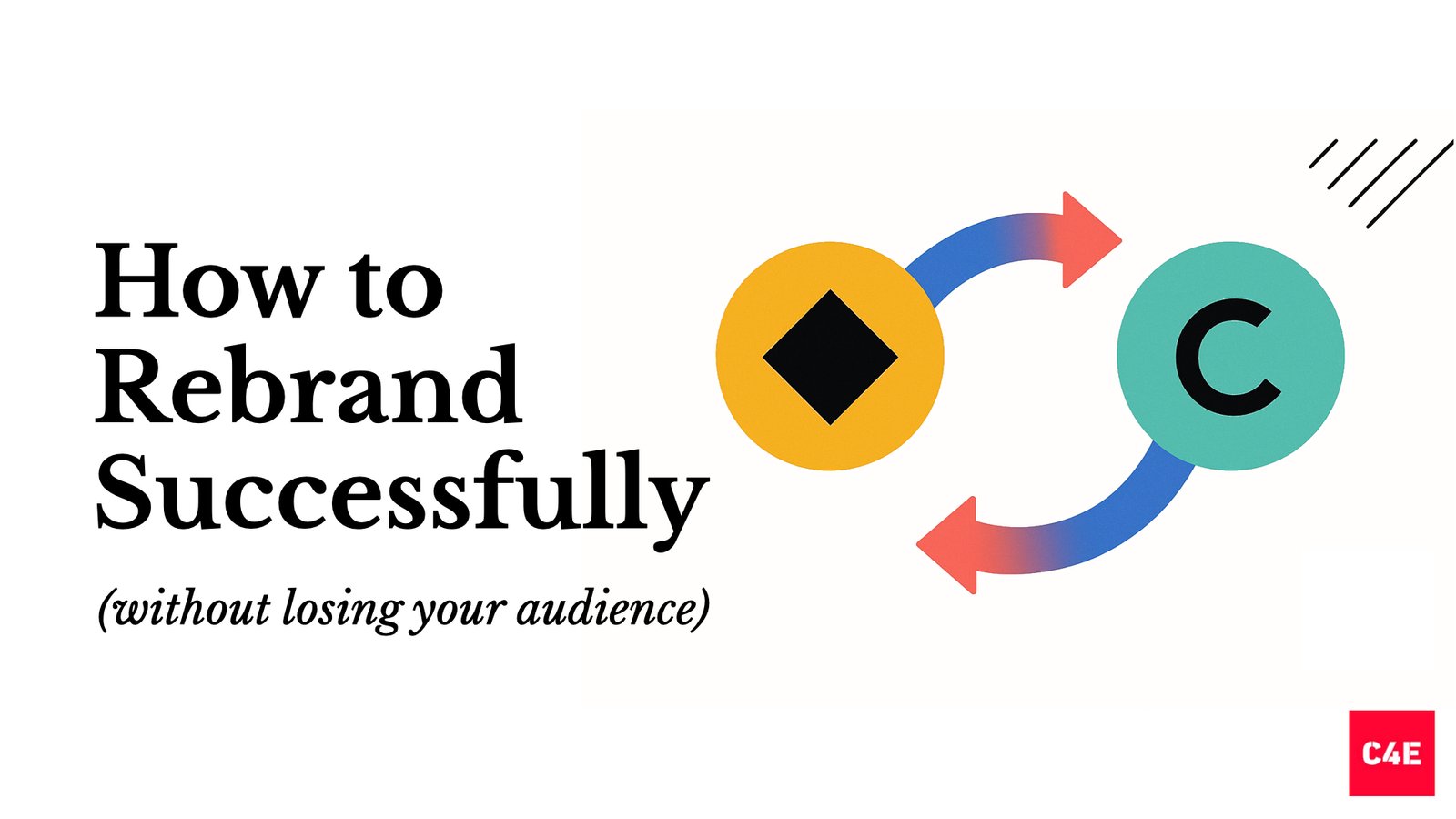
How to Rebrand Successfully Without Losing Your Audience
If your rebrand leaves your audience behind, it’s not a rebrand.
You can change your logo, update your visuals, even rewrite your brand story from scratch.
But if your customers don’t recognize you when you’re done, you’ve lost the most important thing for any business: trust.
And trust is the only thing that makes a brand worth following. Don’t trust me, but trust what the data says.
In 2025, rebrands are everywhere. Companies feel the pressure to stay fresh, stay relevant, stay visible. 82% of marketers have worked on a rebranding project.
That doesn’t mean they all got it right.
Because people don’t stick with brands for the visuals.
They stick with brands that still feel like them.
This article is about making sure your rebrand doesn’t just look good—but lands right.
Why Rebrands Fail (and How to Avoid It)
Most rebrands don’t fail because the design was bad. They fail because the brand forgot who it was talking to.
When you change everything all at once—without warning, without explanation—your customers feel confused, or worse, betrayed.
Seriously, if your favorite brand suddenly showed up looking, sounding, and acting like a stranger… would you trust them?
Probably not.
42% of marketers say communicating the rebrand is the hardest part.
That’s less a design problem and more a people problem.
You’re not trying to become something you’re not. You’re trying to reflect who you’ve become in a way your audience still connects with.
Rebrands flop because they focus too much on the “new” and forget to bring the “why” along for the ride.
If you want to get it right (you do, right?), stop thinking like a designer for a second.
Start thinking like a customer.
What do they need to hear? What do they need to feel? What will make them stay?
That’s the only way to make the rebrand work. Not on paper. Not in a boardroom. But in real life.
Rebranding Without Losing Customers: The Playbook That Works

Rebranding is a conversation, and if you want people to stick with you, you’d better start that conversation early.
Here’s how to rebrand successfully:
1. Announce Early. Seriously.
Dropping a rebrand like it’s a surprise party can be your biggest mistake.
Your audience values consistency, not shock value. So, give them a heads up. Talk about what’s coming. Share your brand transition strategy.
In one study, 41% of marketers stated that rebrands occur to reflect a new audience. But if the same audience doesn’t know why you’re changing, they probably won’t hang around to find out.
2. Involve Your Audience.
Involve your customers in the process. That’s how they buy your story.
Ask for feedback.
Share mockups.
Let them vote.
Invite opinions (even the tough ones!).
When people feel heard, they feel invested in the conversation.
And (bonus!) you’ll catch potential backlash before it becomes a headline.
3. Roll It Out in Phases.
This is in continuation of the first point. The smartest rebrands don’t flip the switch overnight but roll it out piece by piece, giving people time to adjust.
Test the new logo on one product.
Update your socials gradually.
Bring the website in last.
On average, a rebrand involves updating 215 different assets. This is your opportunity to guide your audience through the change one step at a time.
4. Communicate the Why.
This is a part too many brands skip. Don’t be another name in that list.
They tell you what’s changing, but not why.
Don’t underestimate the importance of communicating a rebrand to your customers. Rather than saying, “Here’s the new look”, say, “Here’s why it matters.”
What’s the story behind the shift?
What stayed the same?
What are you doubling down on?
When people understand the change, they’re more likely to welcome it.
Case Study: What Slack Got Right About Rebranding

With their rebranding, Slack didn’t overhaul their brand or try to go viral.
And that’s exactly why it worked.
In 2019, Slack changed its logo.
But why?
Their original logo looked fun, quirky, distinct. But it was a nightmare behind the scenes.
Too many color combos.
Too many unofficial versions.
It only worked at a perfect angle. Even then, not always.
That’s an invitation to chaos.
Slack knew they needed to clean it up to stay recognizable and usable.
Their new logo felt… calmer. More polished. Still Slack, just tighter.
They explained everything.
A full breakdown of what changed, why it mattered, and how it would show up across the product. They ensured that everyone got the context—designers, developers, users.
So why did it work?
Because Slack brought their audience with them.
They didn’t apologize for the update, and they sure didn’t overhype it either. They simply showed up with a better system, and trusted their users to get it.
Unlike many rebrands, Slack didn’t forget who they were. And they didn’t forget who they were talking to.
You don’t have to reinvent the wheel. You just make sure it rolls better.
Rebranding Is a Journey, Not a Big Reveal
If you’re treating your rebrand like a grand unveiling, you’re already behind the curve.
Dropping a new look and hoping for applause simply doesn’t work. Learning how to rebrand successfully requires guiding your audience through change. Step by step, choice by choice.
The average rebrand takes seven months to execute. You need that time not because it’s complicated (even though it’s), but because it should take that long to do it correctly.
More than updating assets, you’re rebuilding trust.
That’s why the brands that win don’t rush the process. They listen. They explain. They involve. And by the time they launch, they’ve already brought their customers with them.
Are you just changing how you look? Or are you reinforcing who you are?
Because when you rebrand with intention, when you make it about the relationship, not just the design, that’s when it works. That’s when you speak to your customers better.

